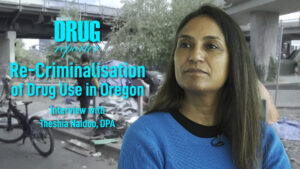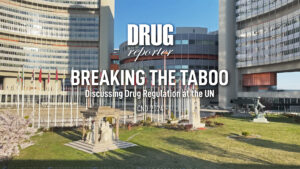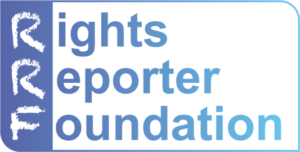The EU Drugs Strategy (2013-20) expires this year and there are huge gaps in its implementation. Policy documents that are not enforced damage the credibility of the EU. To avoid this, we should revise the paradigm and create a new framework for actions.
Access to harm reduction services has been steadily declining in Hungary since 2010, when Viktor Orban won a landslide victory at the parliamentary elections and started to dismantle the rule of law. His government rejected the national drug strategy adopted by the parliament in 2009, a document created with the support of civil society and based on the principles of balanced drug policy. It adopted a new drug strategy in 2013 that aimed to create a drug-free Hungary by 2020. The country embraced a new repressive approach with harsher penalties, scare-tactics in prevention, and political attacks against civil society. The two largest harm reduction programs were shut down in Budapest in 2014, pushing thousands of injecting drug users into hiding, with no access to any services.
In the same year that the Hungarian national drug strategy was passed by parliament, the EU adopted its own drugs strategy (2013-20). Its second Action Plan (2017-20) was praised by civil society as one of the most progressive documents to date, with a strong focus on harm reduction, allowing space for innovation and introducing clear indicators to monitor progress. We are now in the year when this Action Plan expires and the European Commission is evaluating its implementation. What we see is more than disappointing.
According to the EU Action Plan, harm reduction should be scaled up in member states, and at least 200 sterile needles should be provided per injecting drug users per year. In Hungary harm reduction has been scaled down, with the annual number of clean needles distributed per injecting drug user closer to 30. Hepatitis C, a blood-born infection that had been more-or-less contained before 2010, spread rapidly among drug users and its prevalence tripled between 2011 and 2014.
Unfortunately Hungary is not the only example of the failure to scale up harm reduction. Other EU member states in Central Eastern Europe face a similarly desperate situation. Access to harm reduction services remain very low, programs are often terminated, services are limited and fell victim to budget cuts. Innovation is wishful thinking in these countries: service providers struggle for daily survival, with erratic funding, repeated shortages in medications and equipment, service closures, and populist attacks. The situation is somewhat better in the field of drug prevention and treatment – but access to and quality of those services and programs have been very low as well. Lack of trained professionals is a constant problem, even where funding is available.
The EU Drugs Strategy & Action Plan has only been a success with actions that were implemented by the EU Commission or other EU agencies, such as the European Monitoring Centre for Drugs and Drug Addiction (EMCDDA). International cooperation and research is one example. But it has not been a success by any measure where the responsible parties were member states. Unfortunately, in its current weak state, the EU cannot create drug strategies and action plans that are enforceable. These documents are legally non-binding for member states that can interpret them as broad policy recommendations. There are no mechanisms to make them accountable. What is more, member states can make policies that run totally against the principles and goals of what they signed up to in Brussels, without any threat of being punished.
The same governments that sign super-progressive documents in Brussels about social inclusion and health promotion, still spend multiple times more money on punishing and scaring people than on supporting them to stay healthy and alive. And unlike investment in demand and harm reduction, the investment in repression does not seem to be worth it. According to the EMCDDA’s 2019 drug market report, “the European drug market is increasingly characterised by consumers having access to a wide variety of high-purity and high-potency products that, in real terms, are usually equivalent in price or cheaper than they have been over the past decade.” Unfortunately the EU drug strategy and action plans are not as clear when it comes to the indicators of supply reduction than they are with demand or harm reduction. But if we look at the indicators of access and availability of drugs (e.g. market size, value, prices, number of users etc.), we see a significant increase in most illicit drugs.
In 2013, the first year of the EU drug strategy, the estimated value of the cannabis market was 9.3 billion Euros with 16.6 million annual users. In 2017, it grew to 11.6 billion Euros and 25 million annual users. As the EMCDDA’s monitoring report states, “the cannabis market is rapidly becoming more diverse and complex, complicating and putting a strain on current regulatory, law enforcement and monitoring approaches to this drug.” The value of the heroin market was 6.8 billion Euros in 2013 and 7.4 billion Euros in 2017. The growth of the cocaine market was even more spectacular, from 5.7 billion Euros in 2013 to 9.1 billion Euros (!) in 2017.
The data shows that even when drug eradication and interdiction efforts have a measurable impact in reducing supply, this impact is not only limited and ephemeral but often leads to unintended consequences. Take the Ecstasy market as an example. International police cooperation cut the supply of precursors needed to produce MDMA in Western Europe, resulting in a great shortage in Ecstasy supply in 2008. But those who expected that young people would stop using party drugs were soon disappointed. New synthetic stimulants replaced Ecstasy, produced in China and India, with less predictable psychoactive effects. A few years later producers gained new MDMA precursors and the Ecstasy market flourished again. But the new synthetic drugs did not disappear, they spread among marginalised groups of injecting drug users, presenting the health care system with major challenges.
The main response of the EU, to introduce consecutive bans on new substances, only resulted in ever changing substances to replace the earlier drugs. Due to repressive policies, cannabis is often substituted by synthetic cannabinoid receptor agonists (SCRAs, sometimes called “spice”), which are cheaper and easier to smuggle – but have more addictive potential and harmful effects. There is a worrying trend that the (not so) new psychoactive substances rapidly spread among marginalised communities in Eastern Europe, such as Roma people. As Sam Iravani’s excellent report concludes on VICE.com, “now, a decade after becoming the go-to drugs of a new generation of young party kids in the U.S. and UK, mephedrone and other synthetic cathinones are now all over Russia, Eastern Europe and some countries in Asia.” This can hardly be called a success.
The best sign that old prohibitionist policies are failing is that more and more local and national governments decide to experiment with alternative policies. Luxembourg will be soon the first member state to legalise the recreational use of cannabis, with a likely domino effect. A legal cannabis market within the Schengen borders presents an unprecedented challenge for a common EU drug policy. Imagine that the same drug strategy has to encompass policies that regulate the same substance as a legal product and other policies that declare a war against it as an illicit drug.
Some critics of drug policy reform argue that the current prohibitionist approach may not be successful in curtailing the market but it can contain it and keep it at a low level. The North American example shows that cannabis legalisation may lead to some increase in adult use (not in teen use). But the number of users is not the only indicator of drug policies. Repressive policies have their own costs that can be measured not only in money but in human suffering, stigma and social exclusion, and the uncertainties and criminogenic effects of the black market and incarceration, for example.
When there is an official evaluation of these documents, the evaluators usually shy away from being very explicit. They don’t name and shame individual member states who lag behind or oppose measures required by the strategic documents. They do not draw conclusions about the striking failure of supply reduction efforts to reduce supply. It is no wonder civil society organisations grow increasingly sceptical about the added value of these documents. When I speak with service providers at national and local level, many of them are not even aware that the EU has a drug strategy. Those who know it exists are frustrated by the inertia of the EU to enforce its policies, and ask if it really does make any sense to have international documents. It is very damaging to the reputation and credibility of the European project if strategies and policies are disregarded by member states with no consequences.
My conclusion is not to abolish the EU drugs strategy. That would be a step back. What we have to do instead is to realistically assess the situation. The EU should give up the utopian goals to significantly reduce the supply and demand of drugs with repressive law enforcement measures. Just like in the case of alcohol, it should be recognized that not all drug use is abuse – most users of illicit drugs do not cause more harm to themselves or to society than recreational alcohol drinkers. Only the harms of drug use and harmful forms of drug use should be reduced. With this change of paradigm we can avoid adopting utopian, unachievable goals. A new flexible paradigm focusing on reducing drug harms could also accommodate alternatives to current prohibitionist policies. We should overcome the black-and-white fallacy of total prohibition vs. full commercialisation and explore a wide range of regulatory options.
Even if the EU cannot enforce drug policies in member states, it has an important role to provide a blueprint for national and local policies, with a set of recommended interventions, methods, and good practices. It can monitor and evaluate the implementation of policies. It also has the responsibility to support civil society organisations with direct funding to implement international cooperation projects. It is also recommended to create emergency funding pools for service providers in countries where there are major outbreaks of HIV, HCV, or overdose epidemics, and/or treatment and harm reduction is interrupted because of a lack of funding. If we can learn something from the past decade it is that without new direct EU funding mechanisms, there is no chance to scale up demand reduction and harm reduction in the Eastern part of the EU. And in areas where there is no consensus – such as cannabis regulation – the EU can allow member states to experiment, whilst ensuring that common principles and obligations are held.
Peter Sarosi




